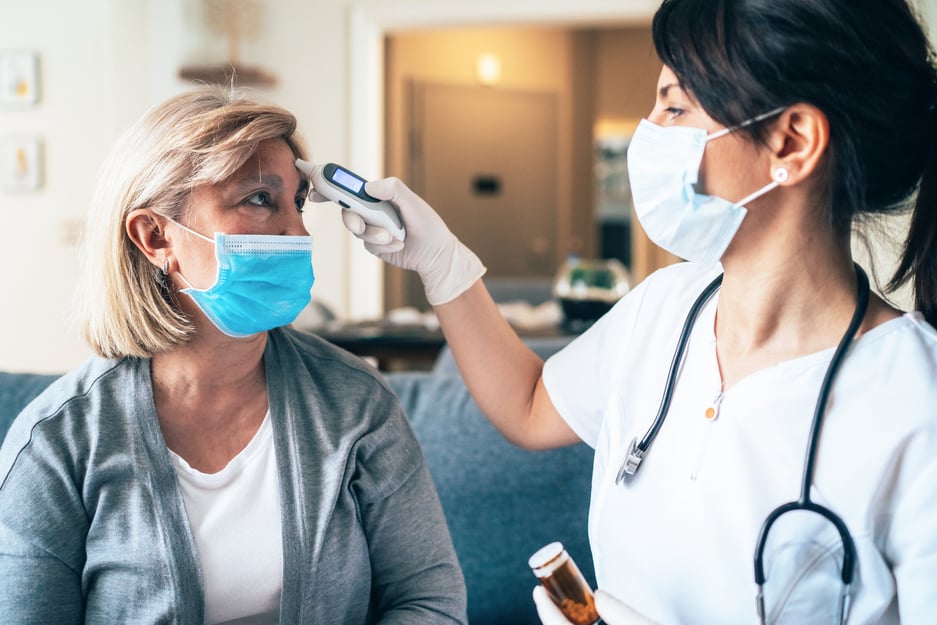The Good, Bad, and Ugly of Screening our Patients
By Guest Blogger Rhonda Hertwig, RN, MSN, CPNP, Ret.
OK, so you might be asking what are we screening our patients for? Many of us have already experienced some form of screening ourselves if we’ve been to our provider or had a visit to the ED. I am so happy to finally be asked some questions related to domestic violence safety. The topic has been a passion of mine for quite some time. To be asked if I feel safe at home, or if I have felt depressed for an extended period of time, are just a couple of good examples. We may even have checklists embedded into our EHR system that serve as reminders.
Many of you are already familiar with the ACE’s Study, or maybe not. Not many know it’s only one of the largest public health studies. While it is beyond the purpose of this blog article, I encourage everyone to become familiar with the study, its implications for us as health providers, and how the study has continued to evolve. This evolution has spurred more research and provided us with evidence-base discoveries to utilize its findings. We have learned so much more about neurobiology, the affects of adverse events in one’s life, what resiliency factors are important to healing, and how we as providers can provide the resources, referrals and connections, that help our patients thrive. Here are some of areas of wisdom I would like to share.
- Adversity is universal:
What may be traumatic to one individual may not be for the next person. I remember a few years back when I was on a layover coming from a nursing conference. There were still several of us at this hub, before we all departed on our flights home. A colleague was crying and very upset at her experience of being patted down by our TCA security. That encounter could have triggered up a past experience, or it could be one of just right out fright. I knew she needed someone to lean on at that time. I didn’t say much, just sat with her, held her hand, offered some tissue, and just listened. This, I witnessed. But point being, most do not identify as victims of previous trauma. While we may not “connect” during a patient’s visit, they will sense that it was a caring and safe visit. When you build that trust and rapport, you will most likely see them again.
- Vulnerabilities:
It seems the Co-vid19 response has been an incredible thrust in bringing our attention to social determinants of health. These are leading risk factors for trauma/ACE. These include poverty, childhood abuse, family dysfunction, school related problems, low self-esteem, community factors, and our justice system, to name a few. Since the start of the ACE Study, we know there has been an increase in substance abuse, divorce, and domestic violence. Also, we know our biases come into play. Some of these determinants were there from the beginning of study, and as I mentioned before, the screening questionnaires have evolved to correlate with societies’ problems. The subsequent research has brought to life the correlation of these adverse events and how it affects our health. We can’t solve these problems right out, but we can be a safe and trusting source.
- Trauma Informed Care:
The effects of trauma and Adverse Childhood Events places a tremendous burden on the individual and, subsequently impacts families, communities, and is a costly impact to our country. It requires a village for sure, so we have to do our part in addressing the issues. If you’re already a mental health provider or thinking of that field, you won’t have a problem in the job market. If Psychiatry or behavioral health is not your main focus, mental health diagnosis account for 25% of visits even with the primary care provider. Bottom line here – read up on the core principles of trauma-informed care (see resource below) so patients are managed more appropriately and help provide the referrals and follow-up that will help in the long journey to treatment. Have your cheat sheet for medications commonly used and use MI principles to facilitate behavioral change in our patients.
- Checking the blocks:
I’m referring to those areas in our EHR’s. Who designs those things anyway? But if I had to address all those areas, I would be working 24/7. Lets get real and make it meaningful (no pun intended), as our patients need us to step up to the plate. I realize I’ve not been a very good listener – both at home and to my patients. But, as I know I am repeating myself and for very good reason – we cannot be that person our patients hope we are. Without those listening skills to build trust and rapport. Be mindful of being focused just on your patient. Put yourself in their shoes so to speak. Use MI skills to let the patient know you are listening. Develop your own templates for visits.
Revisit those areas of compassion and empathy. Do we understand and embrace cultural competency and health literacy? What else do we need in our journey to becoming health providers? Perhaps it might be those soft skills from great mentors. And I’ve used this quote more than once and it means so much to me, as I hope it does to you –
“Unless someone like you cares a whole awful lot, nothing is going to get better. Its not.” The Lorax by Dr. Seuss.
 Rhonda Hertwig is a recently retired Pediatric Nurse Practitioner (PNP) but still an RN working in several arenas (student med records for studies abroad; grant reviews; telehealth asthma coaching) while living in Western North Carolina. She has her BSN, MSN in Pediatric Nursing, and worked the last 16 years as a CPNP. She has a huge interest in school based nursing as well as advocacy work in the area of DMST.
Rhonda Hertwig is a recently retired Pediatric Nurse Practitioner (PNP) but still an RN working in several arenas (student med records for studies abroad; grant reviews; telehealth asthma coaching) while living in Western North Carolina. She has her BSN, MSN in Pediatric Nursing, and worked the last 16 years as a CPNP. She has a huge interest in school based nursing as well as advocacy work in the area of DMST.

